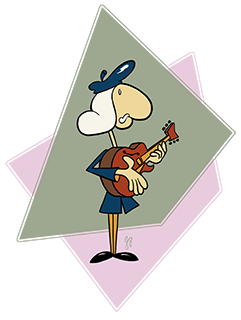Mr. Gambale uses the same strategy so many others use to play over chord changes, which -- in the music he plays -- can come as much as four times in a bar. The secret is targeting one or two notes in an arpeggio -- essential tones. The 3rd and 7th intervals are the ones that immediately state the quality of the chord, so that is the obviously place to start. But being able to get to any interval will help you see the fretboard in a way that lets you play effortlessly over changes.
The Exercise:
Start simple -- looping two bars of E-minor and two bars of G-minor. Play the root 'E' first beat of Emin and Play 'G' on the first beat of G-minor. Slowly work in the accompanying dorian scale as you feel ready.
From there, target the third of each chord. Count up the dorian scale tones to the 3rd note from the E for Emin and the 3rd scale tone up from G on Gmin (Hint: you now play G at the start of Emin and Bb at the start of Gmin). Play this note on the first beat of each new chord. Make sure you are finding the equivalent note everywhere in a position, and eventually everywhere on the neck. The 3rd of a minor is flatted -- it's one fret down from where it appears if the chord were major.
Next, target the flat-7th for each chord. Loop the four bars and play the 7th on the first beat of each chord, adding notes after it.
From there you can move on to the five, and eventually all the tones, the 9, the 13, the 11.
If you want to get fancy, target the tone for a specific beat of the chord, or try targeting two non-adjacent tones in a row.
Do the exercise moving two different chords -- Major to Minor, The V Dominant of a Major to the Major, etc. Find the tones you like for each chord. Find the tones everywhere on the neck. After all that has been mastered, find the tones that are 'outside' the scale and know what they are.
Every time you get stuck on a passage of a tune, like a turnaround, break out that chord change and loop it. Stretch it out and start slow as you can. Target the 3rd and 7th of each chord. Next, target all the arpeggio tones, then all the scale tones, finally all the 'altered' tones. Make sure you are practicing in every position or visualization you have on the neck.

 RSS Feed
RSS Feed
